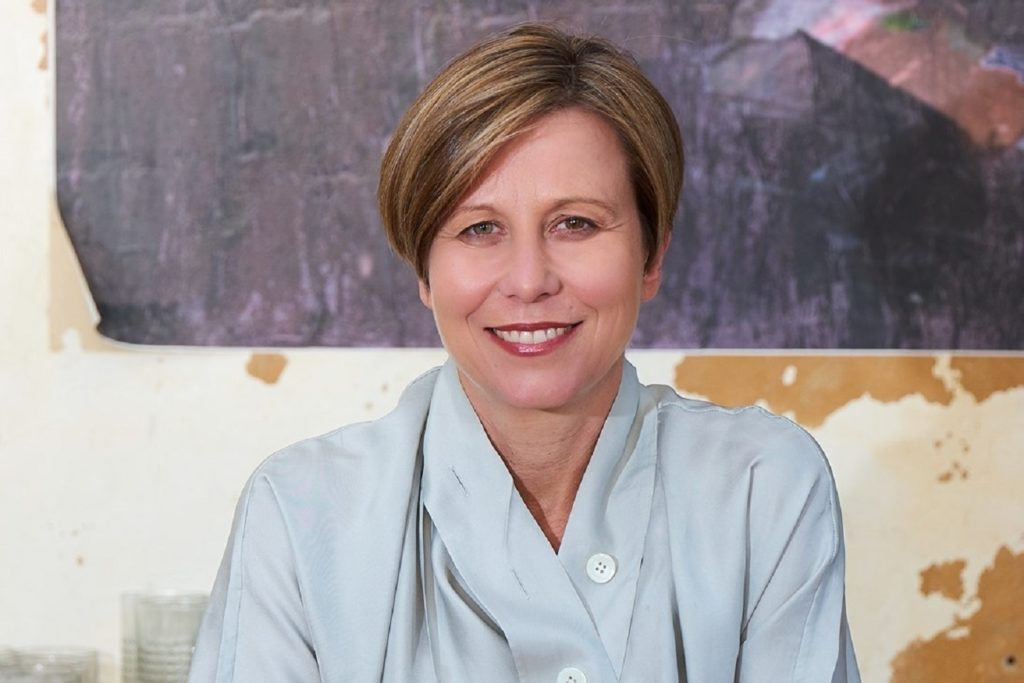This is an edited extract of a speech Senator Jenny McAllister delivered at an event held by the UTS Centre for Social Justice & Inclusion on Tuesday, 2nd November in which Senator McAllister, June Oscar AO, Anne Summers AO and Verity Firth discussed what the next National Plan to Reduce Violence Against Women and their Children must deliver.
***
I’m joining from Gadigal country and I acknowledge the traditional owners and pay my respects to elders past and present.
I’d also like to acknowledge June and Anne.
I had the very good fortune of attending a meeting of about 100 Kimberly women in Broome early this year, where June’s report, “Wiyi Yani U Thangani” was discussed. You could almost physically feel the respect and admiration for June in that room when she spoke, and their pride their June’s report.
Anne Summers, of course, has always broken new ground. Her book “Damned Whores and Gods Police” shook up the way we thought about women in Australia. She hasn’t stopped since.
It’s a great hour to share the stage – even remotely – with these two giants of Australian public life.
I want to start with a quote that was offered to me by a survivor advocate, Geraldine Bilson who many of you will know.
Geraldine said:
“In 2010 Australia’s previous national plan to reduce violence against women and children was established. This was at almost the exact same time I met my perpetrator. On a national level what followed was a decade lacking in political will to achieve the plan’s goals – for me I would spend a lot of that time living with and loving a man who I should have been able to trust, but instead I [was] left physically injured and psychologically destroyed. My experience of domestic abuse sits alongside our nation’s story of failure in achieving a future free from violence. And so I can’t help but think how differently my own life may have transpired had Australia truly committed to ending violence against women.”
It’s really powerful isn’t it. And it’ sad.
Because we all know the statistics.
But Geraldine’s story asks us to reflect on what might have been different. And it reminds us why listening to survivor advocates matters.
I wanted to share some reflections today on what has happened over past decade, and how we can do better in the next.
Labor’s legacy – why the national plan mattered
In 2007, Labor came into government determined to tackle the epidemic of violence against women and children.
Kevin Rudd and Tanya Plibersek set up the National Council to Reduce Violence against Women and their Children and asked them for recommendations.
The council recommended the creation of a National Plan which could co-ordinate a concerted effort to end violence right across the federation.
In the first few years of the plan Julia Gilliard, Jenny Macklin, Julie Collins, Kate Ellis, Tanya Plibersek and others made the most of this opportunity. One of the clearest markers of this is the institutional framework they established.
We saw the creation of a national hotline – 1800RESPECT, a violence prevention body, Our Watch, and the Australian National Research Organisation for Women’s Safety (ANROWS).
These years represented one of the most productive and progressive periods for women’s safety policy.
It is deeply unfortunate – and this is the kindest way I can say this – that this enthusiasm and progress did not survive the 2013 change of government.
A lost decade – a national plan without national leadership
The first minister for women under the coalition government in 2013 was Tony Abbott.
That action set the tone for the eight years that followed.
For most of that time, the attitude of this government to women’s safety policy has oscillated between benign indifference and muted hostility.
The National Plan has saved us from the worst consequences of this.
The rhythm of the National Action Plans has meant that every 3 years successive coalition governments have had to do something – anything – to move women’s safety policy forward.
But that is not the recipe for the ambition or coordinated action, and it shows.
In one particularly lacklustre year, continuing funding for 1800RESPECT was listed as an initiative. You can imagine the conversation in the minister’s office about this – “What shall we announce? I know – we’ll announce we don’t intend to cut a vital service”.
A national plan, without national leadership, will struggle to achieve national progress.
State and territory jurisdictions, such as Victoria, have attacked the problem with energy, attention, and a substantial commitment of resources. But a woman’s safety shouldn’t depend on where she lives.
The next decade – what needs to change
The current national plan expires this year. A consultation process is underway to develop a new one.
While I’ve given a bleak assessment, we’ve never been in a position to demand a more ambitious response.
We know much more about the actions and mentality of perpetrators, about how abuse manifests, about the psycho-social consequences on victims and children and about the short- and long-term physical harm.
A network of survivors and advocates has also worked incredibly hard to educate Australians. Policy makers owe it to Rosie Battie, Grace Tame, Jess Hill, and indeed women like Geraldine who I quoted earlier, leveraging the public awareness they’ve helped create.
I don’t know what will be in the next national plan. But I would hope to see three key changes that deliver the ambition, creativity and urgency that violence in our community demands.
First, it’s time to recognise the context in which violence occurs
I’m increasingly convinced that the reason the coalition’s response to women’s safety is so piecemeal is because they’re unwilling to recognise the context in which violence occurs.
In Scott Morrison’s interview with Tracy Grimshaw earlier this year, he used the word respect 14 times. He did not use the word equality once.
This is a problem.
Violence against women and their children is a function of inequality, and without addressing this deficit – in all of its manifestations – we will never make lasting progress.
And we will continue to see, as we saw in this year’s budget, a grab bag of policies rather than a coordinated response.
Second, we need to address the whole cycle of violence.
Our public conversation about violence, perhaps understandably, tends to focus on crisis and crisis response.
This has been important, but its time to do more.
We need to build on what we have learnt about the nature of violence extend the focus to prevention, early intervention and recovery.
This must be matched by investment.
These responses need to work for all women – especially those who’ve been left out in the past. Women from migrant backgrounds, women with disability, First Nations women and LGBTI people.
First Nation’s women have made it clear that they seek a standalone plan for their communities. This is a call Labor supports.
Third, we need to take advantage of the opportunity to drive change across jurisdictions and portfolios.
We need the federal government to look at the areas it has responsibility for with genuine creativity and ambition in order to drive change.
The Prime Minister is fond of pointing out everything that is the states’ responsibility.
It is true that responsibilities for tackling domestic and family violence do not only lie with the Commonwealth.
The role of the states and territories is vital.
But the fact that the Commonwealth does not control all the levers, does not mean it doesn’t have a significant role to play.
The Commonwealth needs to make a meaningful contribution in the areas it controls – social security, migration, the NDIA, family law and the workplace relations system. Victim-survivors rely on government services to support them, to keep them safe and to help rebuild their lives. These services cannot be allowed enable abuse. I have seen little evidence that reforming these services is a priority for the current government.
In the end the Commonwealth is by far the biggest player. It controls the purse strings, and it is the only level of government that is able to bring others together and lead.
Domestic violence destroys families, communities and the ability of victim survivors to live full and happy lives and contribute to their communities.
We also know how the presence of violence affects children.
This trauma stays with a child for lifetime.
Across the country, more and more women are giving voice to the hurt and trauma of their pasts. They demand action, they demand better.
And they are asking this simple question:
If our leaders can come together to respond to a pandemic, why should they not be able to apply the same level of dedication and focus to domestic and family violence?


